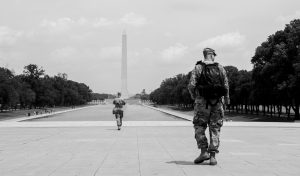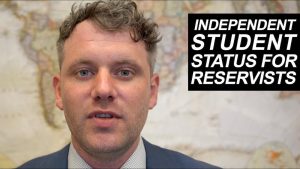Much like a tsunami, higher education is undergoing a series of waves caused by a large and sudden displacement of students and faculty. An invisible virus permeated across the globe, transforming “how and where” we pursue our education.
Unfortunately, the pandemic became the experiment many colleges and universities refer to as the perfect storm for the existing higher education ecosystem. This shift in tides unearthed the complexities of the 21st-century educational model. It revealed how the management of resources (human, economic, etc.), digital wisdom, social responsibility, and knowledge transfer relevancy translate as currency.
Colleges and universities seeking the bridge between online and in-person hybrid formats, blended learning, accelerated programs, part-time options, and more this past year; the pyridoxal shift will ultimately be how to attract talented and motivated non-traditional students, including Student Veterans, to one’s campus.
Enrollment of traditional high school seniors is decreasing, and so are registrations across the country. Institutions that want to compete will need to produce “marketable” future employees that can adapt to these trends. Each year roughly 200,000 Servicemembers transition primarily from active duty and within seven months will likely find themselves enrolled and attending a college/university. This consistent turnover means that Veterans will be seeking value-add degrees and services, scholarships, and flexible course options to start the next chapter of their lives.
Now is the time to act. Universities and colleges are seeking a guide on the potential that Student Veterans bring to their campuses. As a whole, Student Veterans have a 72% success rate in higher education and an average GPA of .40 higher than their civilian peers. It’s no wonder they’re starting to acknowledge and adapt to the profile of Student Veterans. At a glance, here is a basic overlook of Student Veterans (and here’s a specific view of women Veterans):
Student Veterans tend to:
- Be married
- Be older
- Be a first-generation student
- Have a disability
- Work full or part-time
- Use their GI Bill or other benefits (National Guard Scholarship, Federal Tuition Assistance, CH1606, CH31, or earned scholarships)
- Earn degrees in business, health professions, and STEM fields.
This blog was written by a member of the Veterans Education Project. These are the views and opinions of the author and are not necessarily that of the Veterans’ Education Project.





